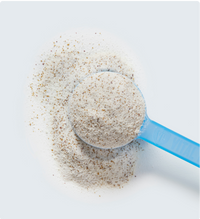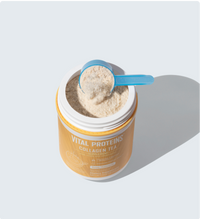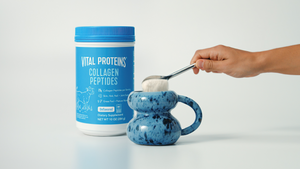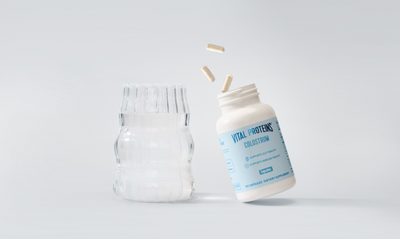Whether you’re training to be on America Ninja Warrior, or you just like climbing, there’s a perfect workout out there for you: the hangboard workout.
For those new to the practice, this involves using a hangboard (also called a fingerboard) to build finger and forearm strength by holding yourself up. This can be done at home or at a climbing gym.
“If you’re already a climber, try these sessions on your off days from climbing,” says Melissa Welsh, NASM Certified Personal Trainer and owner of Limitless Health and Fitness LLC.
To help you get a grip on what a hangboard workout is, we turned to the fitness experts. They answered some of your most burning questions, including how long a hangboard workout should be and the average cost of a session.

How many times a week should you hangboard?
The answer to this is dependent on your current fitness level, says Sergio Pedemonte, CEO & Certified Personal Trainer at Your House Fitness.
Beginners should start at one to two times a week. Once you get the hang of things, though, you can bump it up to two to three times a week.
Intermediate and advanced users can start higher. Pedemonte recommends two to three hangboarding workouts per week. But they shouldn’t go beyond this, cautions Carl Fitzgerald, OTR/L, CPT and Owner & Founder at Vitality Fitness and Rehab.
“In order to prevent injury and maintain the integrity of your hand/forearm tendons, hangboarding workouts should be completed no more than three days a week,” he says.
Should I do a hangboard workout before or after climbing?
You’ll want to do a hangboard workout before climbing “while your fingers are still fresh,” explains Hannah Daugherty, NASM and ACE Certified Personal Trainer, who serves on the advisory board for Fitter Living. “It will get the fingers, forearms, and upper back muscles activated and alert,” adds Pedemonte.
You can play around with this order, though, as Pedemonte says that some climbers like to exhaust their finger and grip strength by hangboarding after climbing. You may even find that you prefer switching things up.
“I've heard folks on all sides adamant that one works better for them than the other,” says John Fawkes, an NSCA-Certified Personal Trainer, Precision Nutrition-certified Nutritional Counselor and Managing Editor at The Unwinder.
To help you determine what works best for you, he recommends hangboarding before climbing one week, and then tackling the opposite order the next.

How much is hangboard training?
Working with a hangboard specialist will run you between $70-$120 an hour, according to Pedemonte. This number varies, depending on the specialist’s experience.
If you’re concerned about the cost, there’s some good news: Daugherty says that most training can be done without coaching. But only once you’re familiarized with the equipment.
You can even purchase your own hangboard to use at home. “They range from about $60 to well over $100, depending on what you choose,” Welsh explains to Lively, adding that you can find them online or at sporting stores.
Is a hangboard worth it?
If you’re an avid climber, this answer is a resounding yes!
“In any sport or physical activity, using training with the equipment that most closely simulates the activity is always best,” explains Paul Bamba, Combat Fitness Expert and Owner/Founder of Trifecta.
Additionally, it’s a great investment for those looking to take their grip and finger strength to the next level. (That hard-to-open pickle jar won’t stand a chance!)
“If you need to build strength and endurance in your fingers; it will help to train your grip, as well as reduce the risk of injury,” says Daugherty.
However, it may not be a soulmate workout for those who consider themselves passive climbers. “Hangboards are so specific that they don't tend to make the best cross-training equipment either,” says Fawkes. “In general, view hangboard training as a commitment, not a hobby.”
How long should a hangboard workout be?
You could be the most self-professed spider-monkey around, but if you’re a beginner, only aim for your hangboard workout to be five to 10 minutes.
“Break down your session into 10 seconds of hanging with 30-60 seconds rest in-between,” explains Welsh, who adds that you can do this for five to eight rounds.
Don’t worry about plateauing, as you’ll increase the time as you progress. For example, Welsh says that you can increase your hang time to about 15 seconds, while decreasing your rest time to 20 seconds. “As you progress, you will also want to advance to more difficult holds on the hangboard.”
Session length can also depend on the type of hangboard training you’re tackling that day. For example, Pedemonte says that “if you're looking to burn out after your climb, this will vary from 3-10 mins. The second example would be a finger and grip warm-up, which would range from 5-10 mins.”
The final example, he says, is when you're training upper back and shoulders. This will vary from 10-25 mins. Also, Bamba says that if hangboarding is your warmup to climbing, then aim for five minutes.
And don’t forget about stretching! This is an important component that shouldn’t be skipped. Pedemonte recommends dynamic stretches before your workout and then static stretching exercises afterward to reduce tightness.













